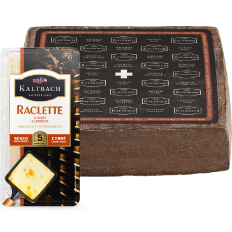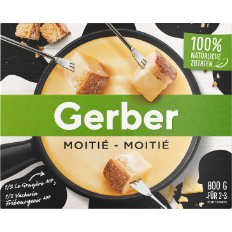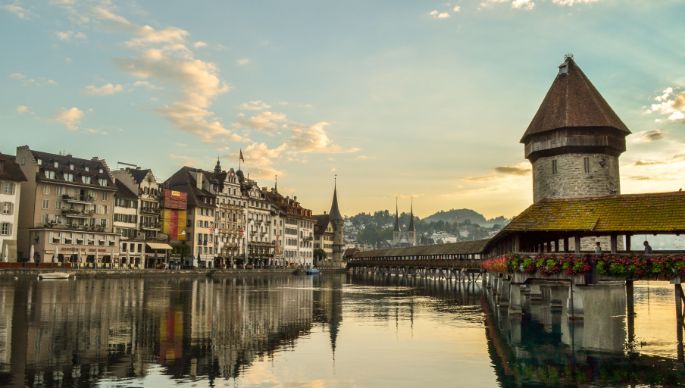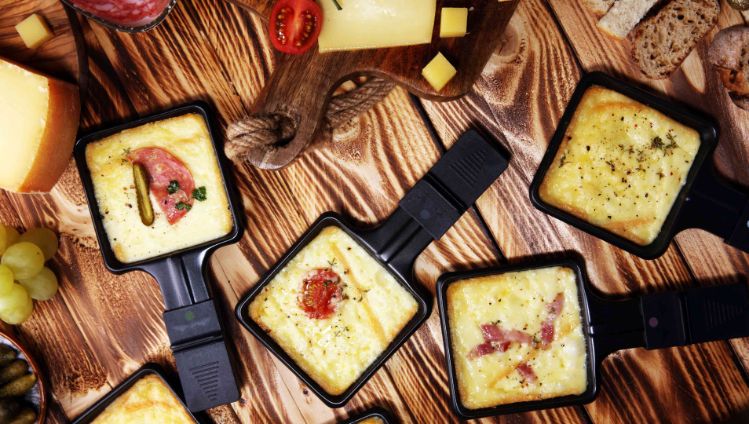
It's time to get melting again!
Potatoes with raclette, bread with fondue – why do we always use the same ingredients? If we take a look at what people do abroad, we have plenty of room for imagination. Plus, we reveal what good raclette cheese has got to do with a ball of wool.
The electric ovens have been fetched down from the attic and dusted off, new gel fuel has been purchased for the fondue burner and the fondue pot is glistening after being packed away over the summer. The stage is set for a new season of melted cheese goodness. Potatoes and bread are the perfect accompaniment to cheese, no one would argue with that. So why change such dearly loved traditions? There's no reason we should. But there's also nothing wrong with giving them a modern twist.
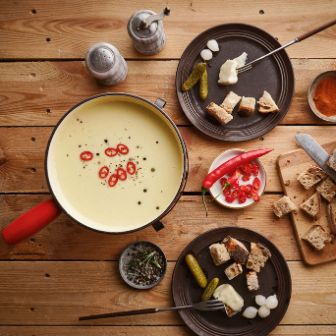
Almost anything is allowed
Take fondue, for example: Everyone knows that pieces of fruit make an interesting alternative to bread. Pears, in particular, pair deliciously with a full-flavoured fondue, but apples, figs and even different berry varieties are also well worth a try.
If you want to add an exotic touch to your fondue evening, then sweet peppers are a great choice. Melted cheese can be wonderfully warming on cold nights. And if you want to take things up a notch, why not add a hot chili to the mix. But be careful: depending on the variety, it might make your eyes water as well as your tastebuds! So it's probably best reserved for those who like it spicy.
Why not meat and fish?
Let's stick with vegetables and draw some inspiration from the New York Food Community "Food52": Brussels sprouts, for example, are surprisingly good. But make sure you pre-cook and lightly sauté them first. A totally new taste experience. Pre-cooked florets of broccoli or cauliflower are also perfect for dipping in hot cheese.
Meat and fish lovers have lots of options as well. Meatballs are ideal due to their shape and consistency, as are prawns and filet mignon. Some people like smoked meats and even pieces of sausage. The only limit is your imagination.
Talking of imagination: why not give pasta a try? Or how about fried potatoes, roast onions, dates or avocado? Let your creativity run wild! If it tastes good, eat your heart out!
Raclette with champagne
Raclette is traditionally served with a variety of accompaniments – cucumber, onion rings and pineapple to name but a few. Here, the ingredients in the cheese are what really shake things up. Alongside traditional plain, peppercorn and paprika varieties, you can also use raclette cheese with a dried flower crust, blue cheese, bacon, saffron, moscato or even champagne.
But as exciting as all this is, you mustn't forget: the most important element has always been and will always be the cheese. Raclette cheese, for example, has to mature for four months so it develops the right flavour. Emmi produces high-quality raclette cheese in Landquart, while Kaltbach is home to a cave-aged variety for those who like a sharper flavour.

Major: Melting properties
The cheese doesn't just have to be good, it also has to melt well. This requires a special recipe during production, explains Klaus Kühefuss, Head of Cheese Development at Emmi. "It's important that the calcium is drawn out during production more so than for other cheeses."
This is because calcium, which is naturally present in milk, acts as a glue holding the clump-like caseins together. Without calcium, the casein – a compound of several proteins – cannot bind together so strongly. "These clumps look like balls of wool," says Klaus Kühefuss. "The warmer it gets, the more they move; then the fat between them melts and the cheese becomes liquid."
Coronavirus? Distance is important
Basically, viruses are not transmitted in raclette or fondue. In the SRF programme "Espresso" of 2 November 2020, Mark Stauber of the Federal Office for Food Safety and Veterinary Affairs (BLV) explained that the danger of transmission does not lurk in the fondue but rather in failing to comply with the applicable distancing rules:
"The virus is transmitted via the air we breathe. We don’t know of a single case of food-borne contagion."


